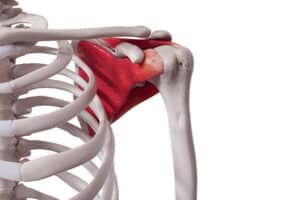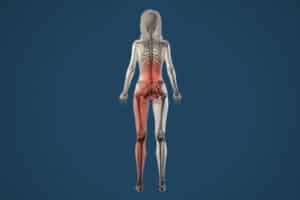Sacroiliac (SI) joint pain is a common yet often misunderstood condition that can significantly impact one’s quality of life.
The Sacroiliac (SI) joint is located at the junction of the spine and pelvis, connecting the sacrum to the ilium. It plays a crucial role in transferring weight and forces between the upper body and legs, acting as a shock absorber and providing stability with limited movement. Despite its minimal range of motion, the SI joint’s health is essential for proper body mechanics and influences the lower back, hips, and legs. Dysfunction in this joint can cause significant pain and impact daily activities. Its proper care and management is vital for overall mobility and well-being.
When this joint becomes irritated or inflamed, it can lead to discomfort and mobility issues. This blog post aims to provide a comprehensive overview of SI joint pain, including its causes, symptoms, treatment options, and the role of physiotherapy.
Causes of SI Joint Pain
Most commonly, SI joint pain is triggered by activities that involve the lower back, pelvis, and legs moving together. A variety of factors include:
Trauma: Injuries from falls, car accidents, or direct blows to the pelvis can damage the SI joint.
Arthritis: Conditions like osteoarthritis or ankylosing spondylitis can lead to degeneration or inflammation of the SI joint.
Pregnancy: Hormonal changes during pregnancy can relax the ligaments around the SI joint, leading to instability and pain..
Infection: Though rare, infections can cause inflammation and pain in the SI joint.
Overuse: Repetitive stress from activities like running or heavy lifting can lead to wear and tear on the SI joint.
Postural Issues: Poor posture or improper body mechanics can contribute to SI joint dysfunction.
Complications of SI Joint Pain
If SI joint pain is not addressed promptly, the resulting pain can impair your mobility. Persistent, untreated pain may also interfere with sleep and contribute to mental health issues such as depression.
What Does SI Joint Pain Feel Like?
SI joint pain can manifest as either a dull ache or a sharp, stabbing sensation. The discomfort typically originates at the SI joint and can radiate to the buttocks, thighs, groin, or even the upper back. Often, standing up can trigger the pain, and it is usually felt on just one side of the lower back. Many people find that the pain is worse in the morning and gradually improves throughout the day. According to WebMD, This condition is more common than you might realize: approximately 15%–30% of individuals experiencing such pain have issues related to the SI joint.
Symptoms of SI Joint Pain
SI joint pain can present with various symptoms, often making it difficult to diagnose. Common symptoms include:
Lower Back Pain: Pain is typically felt on one side of the lower back and can radiate to the buttocks, hips, and thighs.
Pain with Movement: Activities such as standing up from a seated position, climbing stairs, or walking may exacerbate the pain.
Stiffness: Reduced mobility in the lower back and hips can lead to stiffness, particularly after periods of inactivity.
Tenderness: The area around the SI joint may be tender to the touch.
Instability: Some individuals may feel a sense of instability or weakness in the pelvis and lower back.
Diagnosis of SI Joint Pain
Diagnosing SI joint pain involves a combination of patient history, physical examination, and diagnostic tests. Healthcare providers may use the following methods:
Physical Examination: Specific maneuvers and palpation techniques to assess pain and joint movement.
Imaging Studies: X-rays, CT scans, or MRI may be used to rule out other conditions and visualize joint changes.
Injection Test: An injection of a local anesthetic into the SI joint can help confirm the diagnosis if it provides temporary pain relief.
Treatment Options for SI Joint Pain
Effective management of SI joint pain often requires a multi-faceted approach, including:
Medications: Pain relievers, anti-inflammatory medications, and muscle relaxants can help manage symptoms.
Injections: Corticosteroid injections into the SI joint can provide relief from inflammation and pain.
Physiotherapy: Targeted exercises and stretches improve strength, flexibility, and stability of the SI joint.
Manual Therapy: Techniques such as osteopathic manipulations improve joint function.
Lifestyle Modifications: Ergonomic adjustments, weight management, and activity modifications reduce stress on the SI joint.
Surgical Intervention: In severe cases, procedures like SI joint fusion may be considered to stabilize the joint.
The Role of Physiotherapy in SI Joint Pain
Physiotherapy is a cornerstone of non-surgical treatment for SI joint pain. A physiotherapist can develop a personalized program to address the specific needs of the patient. Key components of physiotherapy for SI joint pain include:
Strengthening Exercises: Focus on strengthening the muscles around the SI joint, particularly the core, glutes, and lower back muscles.
Stretching: Improve flexibility in the hips, lower back, and hamstrings to reduce tension on the SI joint.
Stabilization Exercises: Enhance pelvic stability through targeted exercises that promote proper alignment and movement patterns.
Manual Therapy: Hands-on techniques to mobilize the SI joint, reduce muscle tension, and improve joint function.
Education: Guidance on posture, body mechanics, and ergonomic adjustments to prevent further strain on the SI joint.
The Role of Physiotherapy in SI Joint Pain
Sacroiliac joint pain is a complex condition that requires a thorough understanding of its causes, symptoms, and treatment options. With the right combination of medical interventions, lifestyle modifications, and physiotherapy, individuals can manage SI joint pain effectively and improve their quality of life. If you suspect you have SI joint pain, consult a healthcare professional to develop a tailored treatment plan that addresses your unique needs.
Get Started Today!
Seeing a professional physiotherapy provider like Nova Physiotherapy can offer expert care, personalized treatment, education, and a holistic approach to SI joint pain. If you’re considering physiotherapy, contact the friendly and experienced team at Nova Physiotherapy. We’re ready to help you on the road to better health.








